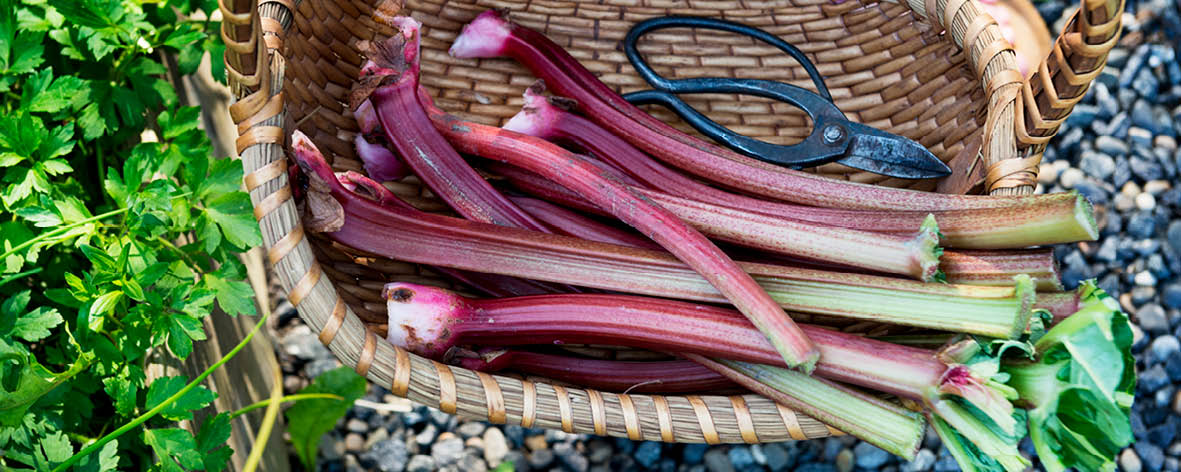What can I do with … Rhubarb?

Rhubarb is a nostalgic plant for many of us, making us think of Nana’s rhubarb crumble with custard, and simpler times. Bring back that feeling with this guide for using rhubarb.
Rhubarb is a hardy plant well-suited to Tasmanian conditions. Related to wild dock and sorrel, it is a vegetable but is treated as a fruit, and has a tart, slightly earthy taste. In season now in winter and generally available all year round (in summer the stalks are thicker and tend towards greenish red), it lends itself to winter comfort food like pies and crumbles, but in warmer months can be used in fools and ice-creams and gives a lovely ruby pink hue to these cold, creamy desserts. It also makes a lovely accompaniment to panna cotta, as its pink syrup looks very pretty against the milky white panna cotta.
There are two ways to prepare rhubarb, either on the stovetop or in the oven.
· On the stovetop, cover trimmed, washed 2-3 cm batons of rhubarb with water and add a few tablespoons of sugar. Bring to the boil, lower the temperature and simmer for 5 minutes. Keep an eye on it as it can very quickly turn to mush. You want the rhubarb to hold its shape but be tender.
Alternatively:
· Heat oven to 200C, place trimmed, washed, and dried 2-3 cm batons of rhubarb in a shallow dish, tip over 100g caster sugar and toss so that the rhubarb forms a single layer. Cover with foil and roast for 15 -20 minutes or until tender (holding its shape and not mushy) and juices are syrupy. Check on it at the 15-minute mark.
The second method is more fool proof if you can’t watch the stove diligently to prevent mushy rhubarb in the stovetop method.
Rhubarb pairs well with apples, ginger, cinnamon, vanilla, rosewater, strawberries, plums, almonds, cream, ice cream, yoghurt, pastry and crumbles, and soft white cheese.
Beware: Rhubarb leaves are extremely poisonous to humans and animals due to their oxalic acid content. They are generally sold without their leaves these days but if you are growing rhubarb yourself, dispose of the leaves carefully.

